Dame Phyllis Frost Centre is a melting pot of rage, reflection, recompense and rehabilitation
DEPRESSION, depravity, despair and the odd doting hug — welcome to the Dame Phyllis Frost Centre, Victoria’s maximum-security women’s prison.

True Crime Scene
Don't miss out on the headlines from True Crime Scene. Followed categories will be added to My News.
IT’S only 5.30am and a prisoner in the L-shaped, grey isolation wing is screaming into her intercom.
Demanding attention. Making threats.
“Get me the f--- out of here,” the voice screeches. Guards don’t need to check the map of cells. They know who it is.
But as much as they are experienced, this is one heavily-built, highly-volatile female inmate even the toughest screws are afraid of.
For standing menacingly behind the door, in one of the six “wet” isolation cells reserved for the most violent prisoners, is Sarah Jean Cheney, 31, the woman jailed for eight years for the brutal stabbing of a La Trobe University student.
SARAH JEAN CHENEY: ‘AUSTRALIA’S MOST DANGEROUS INMATE’
Her cell, where she has spent the past week after lashing out at an officer, contains nothing more than a mattress, two canvas blankets, a stainless steel sink and toilet in the corner (without a lid). Her food is delivered on paper plates — knives and forks not included.

For good reason: Cheney is now known in the corrections system as the most dangerous female prisoner in the country.
She wants to kill someone. She makes no secret of it. It’s on the top of her bucket list.
Cheney has already tried to kill several times here in jail, including a nurse and an officer who suffered such bad trauma and injury they have never returned to work.
“I believe she will try to kill again … she should never be released,” the nurse said in court when Cheney’s sentence was extended.
Now, the intercom buzzers are going off in unison in the isolation wing.
It enrages the staff worn down by the consistency of the disturbance. Often they can’t see what’s happening via each of the 20 cells’ CCTV cameras because the women have covered up the
lenses in clothes, smeared food — or worse.
The women start yelling and screaming at the officers.
At each other. At themselves.
Hardly surprising, with the physiological effects of being alone for 23 hours a day starting to penetrate their sanity.
Welcome to the dawn chorus of Dame Phyllis Frost Centre in Melbourne’s Deer Park. It’s fair to say it’s not the most cheerful of alarm clocks.
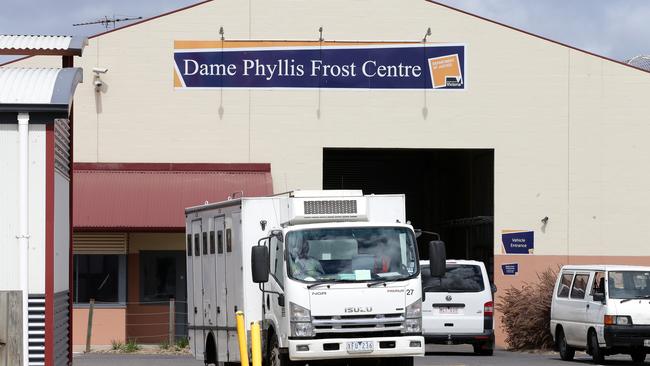
But according to corrections sources, who have spoken anonymously to the Sunday Herald Sun during this investigation about daily life inside the packed centre, it’s the usual wake-up call for
those living and working inside Victoria’s only maximum-security female prison.
A prison that plays host to some of our most notorious female convicts including Judy Moran, Bernadette Denny, Donna Parsons and Rachel Hegerty.
Other, more lesser known figures are there serving time for drug offences, robbery, theft
and assault.
The centre may have an official total capacity of 386 criminals but due to overcrowding and tough law-and-order reforms it currently has 423 inmates.
The Sunday Herald Sun has learned that in February this year the prison hit the peak of its worst ever overcrowding crisis with a total of 463 women somehow packed together into the units and cells.
As part of a new $66 million government development to try and urgently ease the strain, 114 extra beds are being created, including 44 beds in the mental health unit alone.
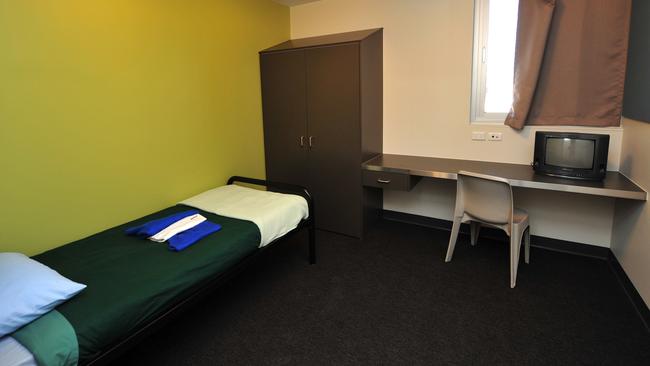
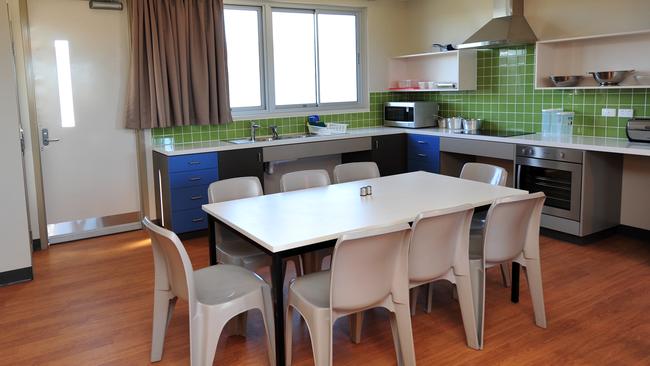
But the building works won’t be complete until 2017, so for now the staff and inmates have to cope the best they can inside the prison — an institution which has been rocked by scandal since it welcomed its first guests in 1996.
In 2003, a male prison guard was charged with raping a mentally ill prisoner. It was only discovered when the inmate was found to be pregnant when she was transferred to the Thomas Embling Hospital.
The guard couldn’t exactly deny the crime; DNA tests revealed he was the father.
Further controversy has blighted the prison ever since. Most notably amid reports in 2009 that heroin and methamphetamines were readily available in the jail along with increases of overdoses and suicide attempts.
It’s 7.30am now and it’s time for up to 80 staff to gather for the “morning parade”, the daily briefing held in the visitor centre, largely a handover between the night and day shifts.
It’s the usual items on the agenda; any self-harming incidents during the night; any fights or fires in cells; suicide attempts.
On a daily basis, the vernacular inside the prison reads like a script from TV prison drama Wentworth.
“There’s actually more drama going on than ‘Wentworth’,” a source says, “but it becomes normal when you work there.”
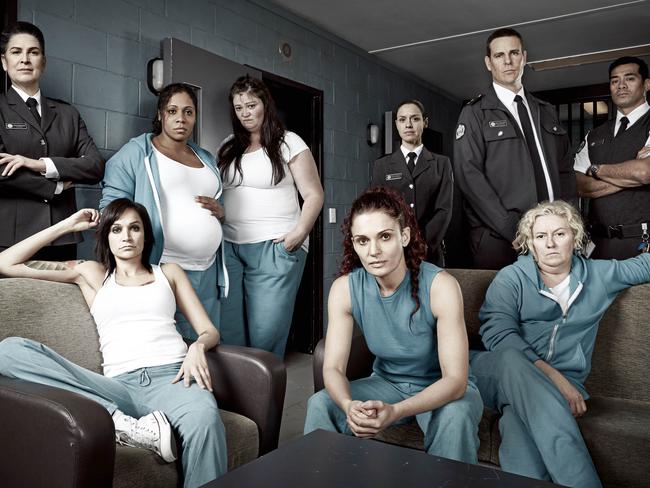
Soon after the meeting ends, it’s breakfast time and prisoners are eating toast, cereal and fruit. They know not to bother asking for Vegemite; its banned due to its yeast properties which prisoners have been known to secretly create a vile homemade alcohol using a mix of fruit juice and water.
Desperate times call for desperate measures behind bars. No matter how odd the taste.
Over breakfast, a fierce row is breaking out between two women in their unit. One is furious that the other has started a relationship with a new pretty female inmate.
“You gate lesbo,” she screams.
Gate lesbians, as they are dubbed in the prison system, are female criminals who decide to “become lesbian” purely during the course of their incarceration.
And it annoys lifelong lesbians, according to sources. Really annoys them.
At breakfast, killer inmate Rachel Hegerty, 38, is letting fellow prisoners push past her to get their supplies from the cupboard.
“She’s always trying to be nice to everyone, she’s very meek,” a source says.
“It’s obvious she wants to distance herself from her crime.”
The crime, of course, was one of the most shocking: the unprovoked street murder of 89-year-old Walter Hughes.
Suffering the effects of alcohol and heroin one day in August 2009, Hegerty repeatedly punched and kicked the blind war veteran, who died later of a broken neck.
She was sentenced to 20 years inside. If she’s good she’ll serve 16.
Her trial heard she suffered from “explosive anger” due to a troubled childhood, but thankfully for the staff and inmates Hegerty keeps quietly to herself.
So far, anyway.
Which is unlike gangland matriarch Judy Moran, 71, who is still struggling to get her day started in her cell.

The former showgirl, sentenced to 26 years behind bars for the murder of Des “Tuppance” Moran in 2009, is not exactly a morning person.
“She starts the day in a bad way because she hates being told to stand up at 8am by guards,” a legal source says.
“She likes to do her exercises first before she moves to her wheelchair.”
Until recently, life was akin to a comfortable nursing home for knitting-loving Aunt Judy, as she is known inside.
Moran used to inhabit one of the prison’s residential units with three other women.
They shared a lounge kitchen and were given a weekly budget to cook their own meals.
By prison standards, it was all very cosy.
But after a fight broke out between two prisoners in front of her four months ago, it was decided Moran was not in good enough health to look after herself and she was moved to a single cell.
Struggling with poor health and mobility, she’s furious about it and making an official appeal.
In the past few weeks, Moran, who lost both sons in the gangland war that brought terror to the streets of Melbourne, has also issued a legal writ against the government for two alleged “assaults” by prison guards in the jail.
On both occasions she claims she was injured during physical attacks which have left her in permanent pain.
As Judy Moran finally wheels off towards the medical centre, other prisoners are heading to work. If they don’t they can face disciplinary action.
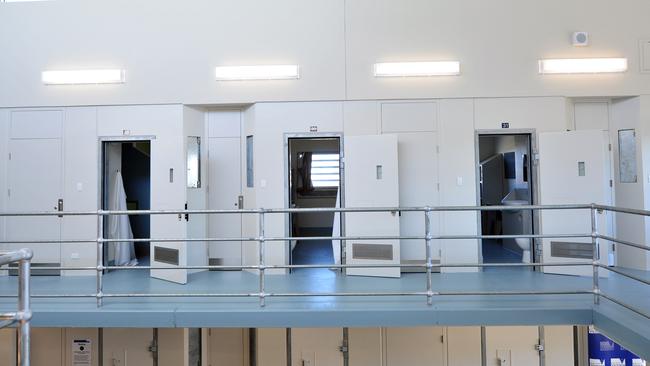
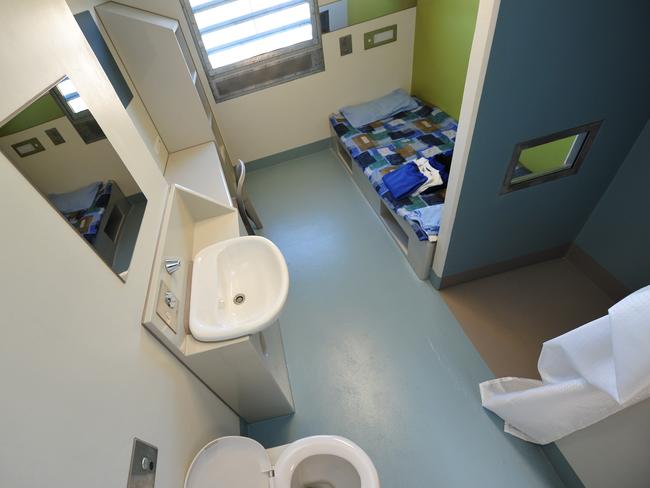

They earn between $7 and $9 per day working in the canteen, garden, gym, library or on jobs in the industry section where they do sewing, screen printing and crafts for external companies.
“They get access to their wages but the prison ensures 10 per cent is kept back and saved for their release,” a source says.
Apart from work, prisoners can take part in activities including study and art classes, with the inmates’ often traumatic life experiences drawing out notable talent among many inmates.
One of the more surprising emerging artists is said to be Donna Parsons, the woman dubbed the “Welsh Dragon” during the 2002 trial she faced for paying a hit man to kill her husband.
The former wrestler is said to be quite the natural in art classes and has even been known to help with the staging of the annual theatre show.
While her trial heard about her manipulative planning of her husband’s demise, the 55-year-old is today described as a tough but popular figure in the jail.
“She’s without doubt one of the top dogs in the jail, but in a good way,” a source says.
“She stands up to bullies who try any stand-over tactics on weaker characters, and nobody argues back because of her strength and her wrestling background.”
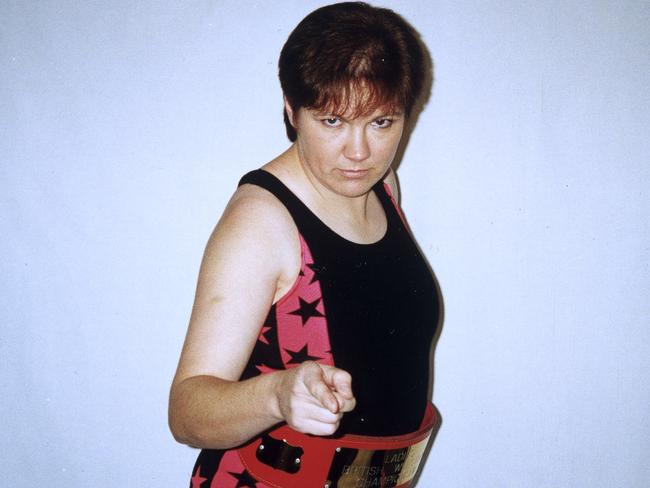
After lunch of either sandwiches or pies, eaten in cells or communal areas, the inmates often enjoy making a fuss of the five or six children who currently live in the jail alongside their convicted mothers.
For most on the outside, the idea of children living in jail with criminals sounds alarming. However the children are said to be adored by both staff and inmates.
“They are treated like walking angels,” says a source.
“Many of the inmates have been separated from their own children for years on end so they spend time reading to them, fussing over them and playing with them.
“The children always seem happy and healthy.”

THERE is often a flurry of excitement with an influx of new prisoners coming in.
“This means one main thing,” a source says.
“Potential drugs coming in, usually secreted in the bodies, so there is always a large welcome party.”
Before the new prisoners get mobbed, a diminutive prisoner — no taller than 150cms — usually steps forward to greet them away from the pack.
The new prisoners probably wouldn’t know that this pint-sized bundle of reassurance and kindness at the door is actually the notorious sex-swinging killer Bernadette Denny.
Bernie, as she tells her new companions to call her, was convicted alongside Mario Schembri for the manslaughter of millionaire businessman Herman Rockefeller in 2010.
Astonishingly, the Sunday Herald Sun has learned, the 47-year-old has now reinvented herself as a well respected peer worker in the prison.
“In her role she is the first to greet new prisoners,” a source says.
“She usually gives them a warm hug and says hello.”
The mother-of-two is due for release any day, partly thanks for her exemplary behaviour.
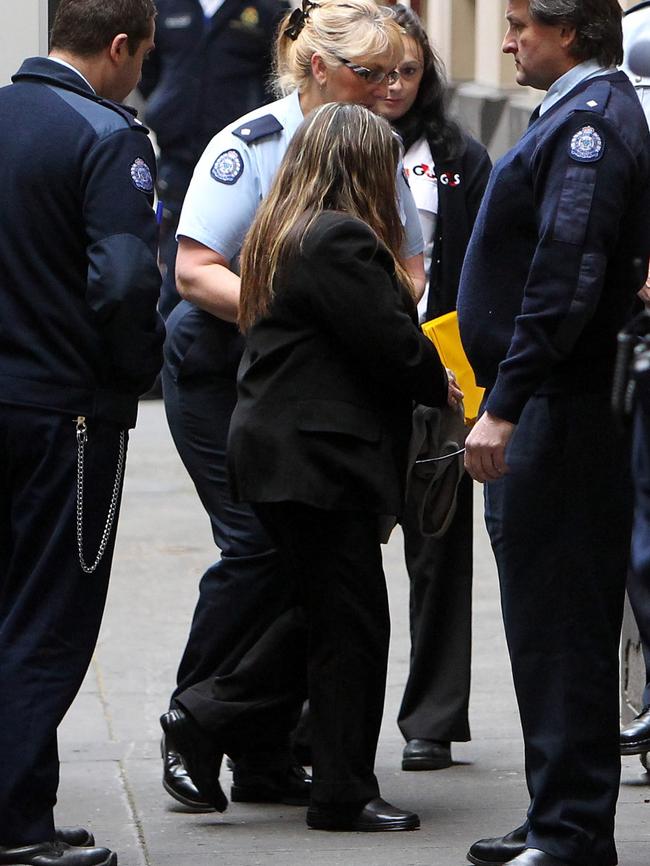
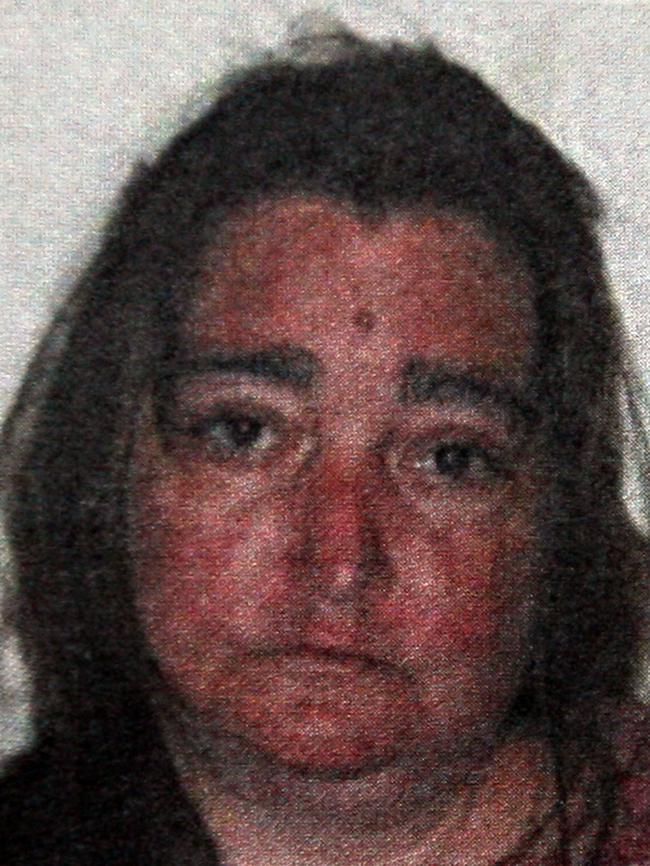
But while Bernadette Denny may well be a model prisoner, others are not. Especially when it comes to trade.
The “banking” of drugs in bodies by new prisoners coming into the jail is said to be constant problem.
And if they can’t get them in that way, prisoners on medication are known to hide their drugs in their mouths and later trade them for money, toiletries or even sexual favours.
Taking “Bupe”, short for Buprenorphine, an alternative drug therapy for methadone, is one of the most popular ways for prisoners to get high.
“It’s proving a major problem in prisons across Australia because it can come in wafer thin form and even be hidden in envelopes coming into the jail,” says a corrections source.
Before dinner the entire gym area is closed off.
The volatile Sarah Cheney has been brought down from isolation and needs to do her weekly exercise on the rowing machine.
She’s such a risk to other prisoners, guards have no choice but to give her rock star treatment and allow her the run of the place to herself.
By 7.30pm, after all the inmates have eaten dinner, it’s time to be locked away in cells.
The night shift staff have arrived. The buzzers have started to go off. It’s going to be another long night.


